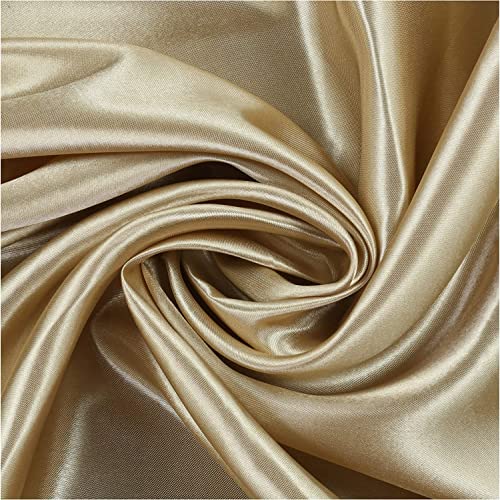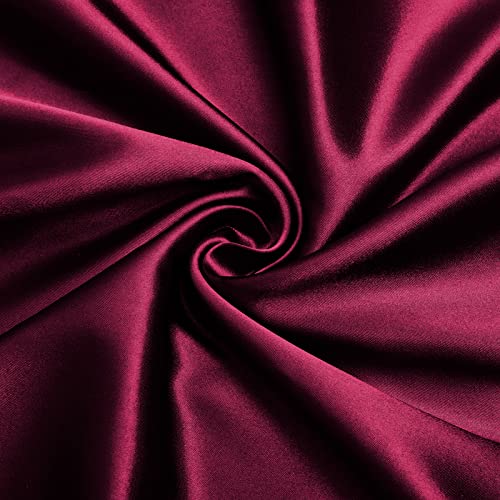Sewing with satin can feel like a daunting task, especially if you’re unsure about the right needle to use. Satin’s luxurious and delicate nature demands a needle that can glide through the fabric without causing snags or puckers. Choosing the correct needle size is essential to achieving those smooth, elegant stitches you’re aiming for.
You might wonder why satin requires special attention. Well, its silky texture and tendency to fray mean that using the wrong needle could lead to frustrating results. Don’t worry, though—once you know which needle to use, you’ll find that sewing with satin can be a rewarding experience. Let’s dive into the specifics so you can confidently tackle your next satin project.
Understanding Sewing Machine Needles for Satin Fabric
Selecting the right needle for satin is crucial. Satin’s delicate and luxurious nature demands careful attention to detail.
Types of Needles Used for Satin
Several needle types suit satin. The following are the most common:
- Microtex Needles: Designed with a slender, sharp point that penetrates fine fabrics like satin without causing snags.
- Sharp Needles: Similar to microtex, these have a very fine point and are ideal for penetrating dense weave fabrics.
- Universal Needles: While a versatile option, these are less optimal but can still be used if no other needle type is available.
Importance of Needle Size When Sewing Satin
Needle size impacts the quality of stitches on satin. For best results:
- Size 60/8: Suitable for very light and delicate satin. This needle size minimizes the risk of snagging the fabric.
- Size 70/10: Ideal for standard satin weights, offering a balance between durability and fineness.
- Size 75/11: Used for heavier satin, this size provides additional strength while still gliding smoothly through the fabric.
Choose the correct needle type and size to ensure smooth, elegant stitches on your satin projects.
Choosing the Right Needle Size for Satin
Selecting the correct needle size for satin is essential to avoid issues like snags and puckers. Satin’s delicate nature requires precise needle choices to achieve beautiful, smooth seams.
Factors Influencing Needle Size Selection
Several factors impact your choice of needle size for satin. First, consider the fabric’s weight. Heavier satin needs a slightly larger needle, while lightweight satin benefits from a smaller one to prevent damage. Second, thread type matters. Fine threads pair well with smaller needles. Lastly, the stitch type affects needle selection; finer stitches work best with smaller needles.
Recommended Needle Sizes for Different Satin Types
Use size 60/8 needles for delicate, lightweight satin like charmeuse. They reduce the risk of fabric damage and ensure clean stitches. For medium-weight satin such as duchess, a size 70/10 needle is appropriate, offering a balance between durability and delicacy. Heavier satins, like costume satin, require a size 75/11 needle to handle the fabric’s thickness and sheen without compromising stitch quality. Adjust needle size based on your satin’s specific characteristics for best results.
Tips for Sewing Satin Successfully
Working with satin can be challenging. Follow these tips to achieve professional results and avoid common pitfalls.
Adjusting Tension and Stitch Length
Correct tension and stitch length ensure smooth seams. Set the tension dial to a lower number to prevent puckering. Test on a scrap piece and adjust gradually. Shorten your stitch length to around 2.0-2.5 mm for tighter and more controlled stitches. This avoids the fabric shifting out of place. Always use consistent settings across your project for uniform results.
Techniques for Preventing Snags and Pulls
Choose the right tools and methods to avoid snags and pulls in satin. Use a fine, sharp needle like a Microtex or sharp needle in sizes 60/8 or 70/10, depending on the fabric’s weight. Sew at a moderate speed to maintain control. Place tissue paper or a tear-away stabilizer under seams for added stability. Pin fabrics with fine pins or use fabric clips to avoid leaving marks. If the fabric is particularly delicate, use a small zigzag stitch to distribute stress evenly.
Caring for Your Needles and Satin Fabric
Proper care for both your needles and satin fabric ensures your sewing projects maintain durability and quality. With tailored techniques for maintenance and fabric longevity, you can achieve professional results every time.
Best Practices for Needle Maintenance
Regular needle maintenance directly impacts your sewing efficiency and fabric quality. Follow these practices:

- Change Needles Frequently: Replace needles after 8-10 hours of sewing or upon noticing any dullness. Sharp needles penetrate satin effortlessly, reducing snags.
- Clean Needles: Wipe needles with a lint-free cloth to remove dust and residue. Clean needles glide smoothly.
- Avoid Rust: Store needles in a dry, cool place. Rusty needles can ruin delicate fabrics like satin.
- Use the Right Size: Always match needle size to fabric type. Satin requires fine needles, typically size 70/10 or 75/11.
How to Ensure Longevity of Satin Fabrics
Maintaining satin fabric’s integrity involves specific care steps:
- Gentle Cleaning: Hand wash satin in cold water using mild detergent. Machine washing can damage the lustrous surface.
- Air Drying: Lay satin fabric flat to dry. Avoid wringing or twisting, as these actions can cause wrinkles and distortions.
- Proper Storage: Store satin garments in a cool, dry place, either hanging or folded with acid-free tissue paper to prevent creases.
- Ironing with Caution: Use a low heat setting on the reverse side or place a press cloth between the iron and the fabric. This prevents shiny spots and scorching.
Implement these care techniques to maintain the pristine condition of both your sewing needles and satin fabrics, ensuring your projects remain elegant and refined.
Conclusion
Sewing with satin can be a rewarding experience when you choose the right needle and follow a few key techniques. Ensuring your needle is the correct size and type will help you achieve smooth, professional results. Don’t forget to care for both your needles and satin fabric to maintain their quality and longevity. With a bit of attention to detail and the right tools, your satin projects will turn out beautifully elegant and refined. Happy sewing!

















